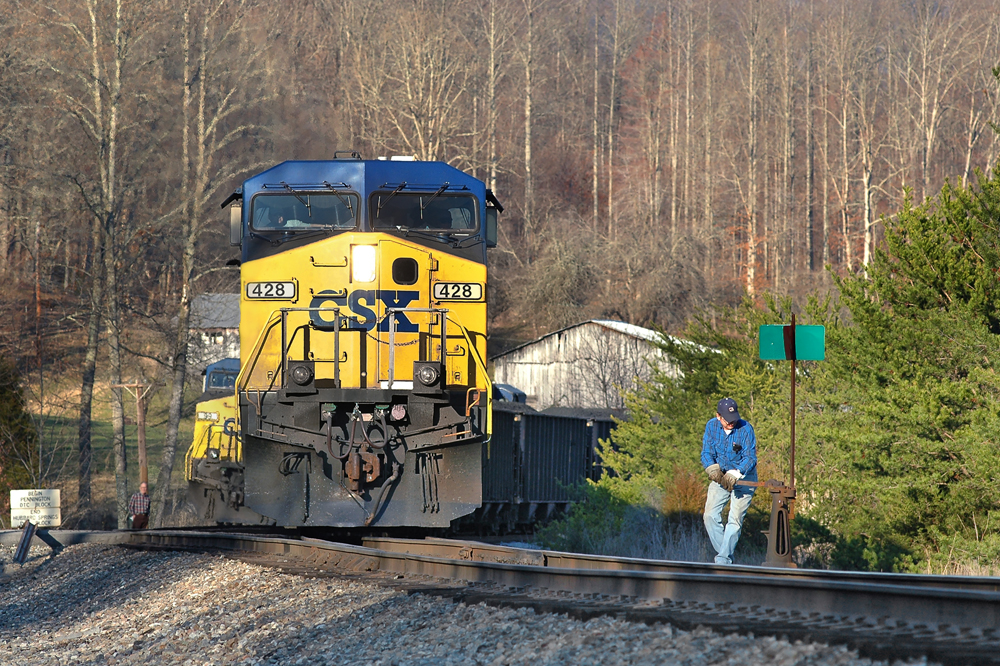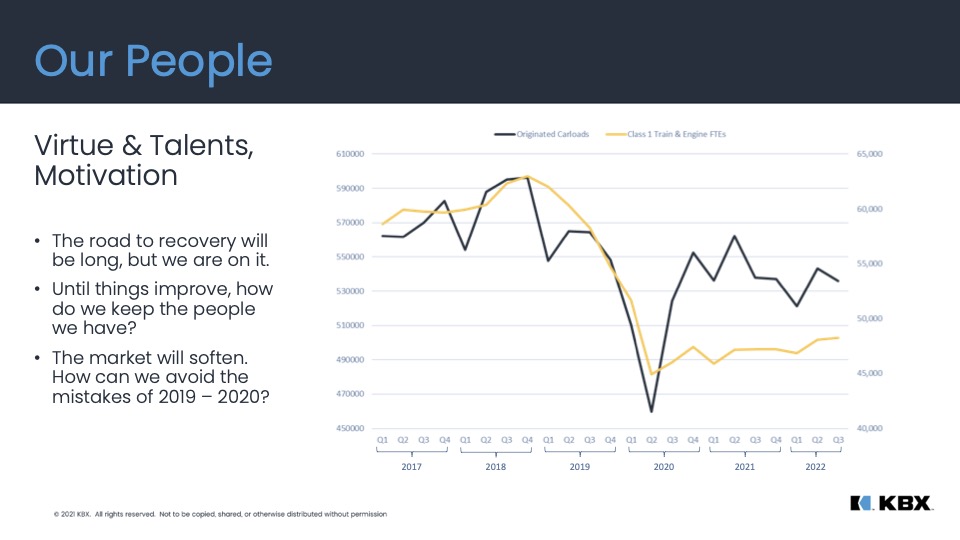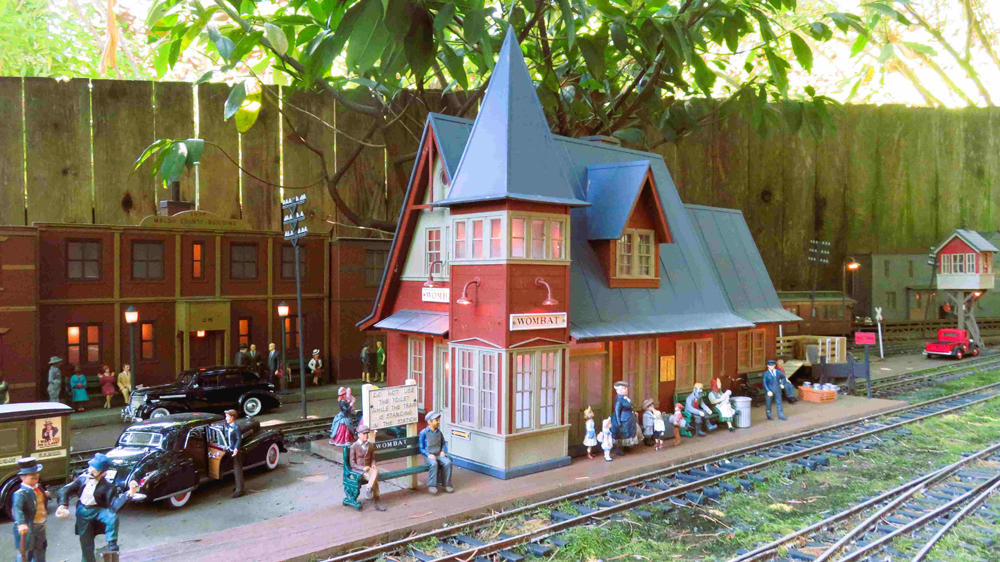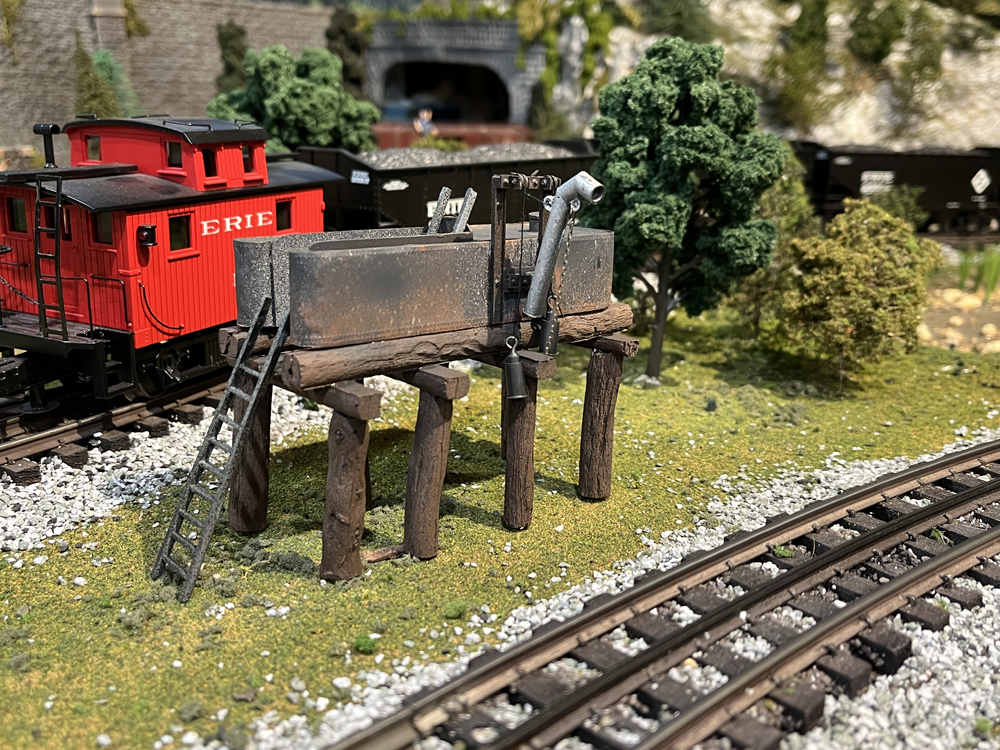
PITTSBURGH – In order to attract, hire, and retain conductors – and avoid crew shortages that snarl operations and hurt service – Class I railroads need to make the job more appealing to today’s workers.
That was the consensus of shippers, railroaders, and analysts who spoke at the North East Association of Rail Shippers conference last week.
Fixing the poisoned labor-management relationship would help, too, as evidenced by the last-minute tentative contract agreement that the Class I railroads and unions reached this month.
“We can all agree that the last couple weeks were an exercise in political brinkmanship and really was the latest manifestation of institutionalized animosity within our industry that has the potential to threaten its future,” says Eric Monger, vice president at KBX Rail, the logistics arm of Koch Industries, the conglomerate that ships 180,000 carloads per year and is the country’s largest exporter of containerized freight.
Railroads need to retain current train and engine employees while closing the yawning gap between traffic volume and the number of crews available to move tonnage, Monger says. They also need to motivate crews to work as productively and safely as possible, he adds.

“I don’t think anyone at the railroads will deny that throwing money at our people problem was necessarily the answer. All of the attendance bonuses, the buybacks, and other incentives that carriers gave starting in the pandemic when we needed the employee base back seemed to fall flat in terms of generating meaningful outcomes. You heard last week in the news articles that what took us down to the wire in negotiations with SMART-TD and BLET wasn’t pay, it wasn’t insurance premiums. It was quality of life.”
Arthur Adams, CSX Transportation’s senior vice president of sales and marketing, agrees.
Although some of railroads’ hiring difficulties are attributable to the great resignation that accompanied the pandemic and affected all employers, Adams says railroads’ hiring woes go deeper.
“What we realize is that you can’t solve the challenge just financially. There’s also a quality of life issue that must be resolved. There’s a work environment issue that must be resolved. And there’s a cultural issue that must be resolved,” Adams says. “And we’re targeting all aspects.”
CSX shows job applicants a video of a day in the life of a conductor as a way to set expectations before they enter training. The railroad has boosted conductor pay, starting new hires at the rate that previously would have taken three years’ of seniority, Adams says. CSX also is looking at ways it can reduce the uncertainty that comes with low seniority as well as how to make schedules more predictable, he says.
“This is no longer our father’s railroad,” Adams says. “We’re now recruiting millennials and Gen Y’s who have very different expectations on the work environment. And we have to figure out how to support them and meet them where they are.”
Railroads have been talking about changing work expectations of younger generations for the past decade, independent analyst Anthony B. Hatch says. Millennials don’t like the railroad’s command and control structure, being yelled at, or having “f-bombs” dropped all day, he says.
“So we’re going to do something radically different,” Hatch says the railroads promised years ago. “And of course we’re coming to the conclusion that they forgot their own lesson.”
Monger says shippers can help their own cause by treating railroaders with respect, forging good relationships with local crews, and providing them with things like bottles of water, rest rooms, or buying them lunch from time to time.
“We all know that railroading isn’t easy. It’s hot, hard, dirty work. And we should have the utmost respect for the people who do it every day in heat, the rain, and the cold,” Monger says. “Hiring’s even harder in this industry.”
The job comes with few amenities. “The best you can hope for is a pot of coffee that can probably dissolve a spoon,” he adds.
Michael Miller, president of Genesee & Wyoming’s North American operations, says new hires put more value on time than money and are harder to retain due to the unpredictable nature of the job.
If railroaders stick with the job for five years, they tend to stay on, Miller says. So G&W is developing a bonus program to help retain conductors. “We’ve got to keep people once we get them trained,” he says.
The big four U.S. Class I railroads — BNSF Railway, CSX, Norfolk Southern, and Union Pacific — are under regulatory scrutiny for crew shortages that began in the East last year and spread to the West this year.
Service is on the upswing as new conductors help ease crew shortages, but the railroads still have a ways to go before they reach full active train and engine employee staffing levels, according to data they report to the Surface Transportation Board.









Precision railroading where a designated train departs at a designated time …well how about a designated crew for these trains.
I was the General Chairperson at a Class 1 in Canada for years and ALL scheduled trains left their home terminals with assigned crews.
so simple.
At a long-ago employer, our CEO was on the Board of Norfolk & Western for ages. He talked about the “Lubritoriums”, Roanoke Shops, and other things that made the N & W a well-oiled machine. One thing he talked about was what they did to keep “key people” employed at Roanoke Shops during the Great Depression. Some were very “creative”! Why did they do this? “Because we knew we would need those people one day. And, thus to took care of them today so they could take care of us tomorrow.” He also said that had it not been for the demise of the “appliance suppliers”, N & W could’ve stayed in steam into the 1960’s. And, how he got shot down by Al Perlman on preservation.
I never understood why they never(As far as I am aware) had rotating time off to keep everyone on the payroll, instead of laying off a bunch of people and then come up short when traffic backed up. I worked at a place for a year or so that had a downturn in business. The higher ups stayed on full time for the most part, but instead of laying off 25% of us flunkies, they just gave chunk of us a week off every three weeks. It lasted about 10 months, and everyone had at least 8 weeks off during that time. It was pretty great, you just had to watch your money, and to make up for the shortfall, I took that week to fill in at a local security company when people went on vacations. As soon as business picked back up, the bosses sent out a notice that everyone was back to 40/hrs a week as of the first of the month. Most of the employees that were on the 3 week deal made out well enough to sit home and watch TV, etc all day. I liked the place, but when I got a call saying a job I had applied for a couple of years earlier was open, I left.
Conrail had it right; excellent morale, steady hours, first-name basis top-to-bottom. Regular train assignments where possible, short-turn crews where possible (Harrisburg-Altoona and return, swapping with Conway-Altoona and return). But it all fell apart at the bust-up, and them along came EHH. Pity.
“This is no longer our father’s railroad,” Adams says. “We’re now recruiting millennials and Gen Y’s who have very different expectations ………”
And therein lies the problem, but it’s not just the union ranks. Management is now primarily coming from universities rather than up from trackside, and also have very different expectations, based on theory.
John, I heard the same trope about college grads filling management 25+ years ago. Some of the worst railroad managers I met came from the craft. Some of the best entered railroad management within a few years of graduating college. The opposite was also true.
One railroad CEO that came from the craft that everyone loves to hate: Hunter Harrison.
On the other end of the spectrum NP/BN had Norman M Lorentzen. Started out on a track gang in Jamestown, ND, eventually becoming BN President. Train service, train Master. Division Supt, VP along the way. He was described as a Railroads Man Railroader.
We’ve been railroading in this country for 195 years & an on call 24/7 extraboard or general pool is the best they can come up with for scheduling?? It’s lazy and pathetic. With the RR’s absurd self-generated, self-inflicted attendance policies, it is a wonder anyone has stuck around. They shoot themselves in the foot every chance they get & then play victim: “we can’t find anyone to do this job.”
Amen to that, Mr. Link. Having left the railroad 40 years ago, I am amazed that this basic business function has still not improved and has probably gotten worse. It’s not a matter of ‘late stage capitalism’ or even the entitled mentality of the younger demographic. There’s still plenty of young people willing to work hard and stick around.
There just aren’t as many people, whether new hire candidates or existing employees, willing to put up with inept and entitled management who appear to have not a clue or a care about anyone below them on the org chart.
Until Class 1 management changes its furlough philosophy nothing will change. I used to work for a large, privately held, engineering/construction company. It was a cyclical business but our CEO held on to skilled and professional employees during down times so the company didn’t have to re-staff when business came back. Of course, unlike the class 1 railroads, our company didn’t answer to Wall Street.
Clayton you have really hit the nail on the head. Furloughs can really mess up employees. Just figure a conductor having about 2 years service with no lay off figuring he can now buy a home or new truck with money he saved as a down payment. So, he does it and in few months he is laid off with no income and is probably faced with losing one or both purchases. And consider this can happen more than once. After going thru that you can understand that a high percentage do not go back . The only way to solve that is to keep them on the payroll at a reduced but, still livable rate. Now, do you think any of the “big 6” will do that?
I don’t have any skin in this . But, I would think now is the time for labor to force guaranteed days off every week in addition to time off for medical needs. If they don’t this thing will fester for a long long time and hiring will get worse.
In my 15 years at a Class 1 the hiring plan always started getting out of sync the moment there was a change in conditions. From that moment on things were misaligned for months and the inevitable outcome was TYE furloughs. The railroad would take on too much business ahead of hiring or line and terminal capacity to support the additional starts. So then the railroad starts slowing down. Hire more people!
The worst was 2014 where after the crude oil bust there were new hire classes going straight to furlough.
“Welcome to the railroad, thanks for quitting your job. Here is 16 weeks of student pay, we’ll see you in 3 years when you are recalled!”
I’m surprised that the article made no mention of the railroads’ propensity to lay off large numbers of T and E employees at the first whisper of a downturn in volume. The railroads need to find a way to keep staff on so they are ready for the inevitable upturns.
You mean you haven’t heard of the purple squirrel?
Purple squirrels are job openings that seek out the job candidate with requirements that can’t be met.
– Like wanting 10 years experience with a tool that has only been out 3.
– Like wanting a MBA for a position that only pays $15/hr.
– Like wanting a candidate to work 60 hours a week while on salary for 40 hours
– Like advertising for a “coachable, trainable” candidate with a very “recent” degree
– Like putting a title on the open position that is 2 job grades above what the role really is
Then when no one applies, or no one qualifies, then and only then do they report to the media that there is a gross talent shortage in the US. “We just don’t understand why there is no qualified candidates”
Amen John.
The term ‘purple squirrel’ is new to me – thanks! – and the tech industry is rife with that style. They write job descriptions with arcane qualifications that only specific H1B candidates can meet so they can have a fearful and easily intimidated work force.
Well well. How does it take a conference of highly over paid railroad managers to come to an agreement that their railroad jobs suck and no one wants them anymore? They could’ve saved many dollars if they’d actually listen to the trainmen and take their suggestions or criticisms of the way they handle us and moved to change but instead they point their noses up at us and essentially flip us the bird all the while mumbling something like how dare they tell us how to run our railroad they’re just piss on conductors and engineers, we don’t need them they’re useless in this organization we call a railroad. Suddenly when the eligible public that is looking for a job flips the bird to the railroad recruiter the railroads react virtually in shock at the audacity of people. Well I say it’s their bed they made it and they’ll have to sleep in it for awhile and it’s all their fault. By the way this contract business is far from over and judging by the word in the yard offices it’s not looking good.
I managed municipal employees for 29 years, retiring in 2019. During the last six years, I managed Gen Y and Millennials, along with extremely entitled Gen Xers. That was enough for me. These are actual instances.
Can I come in at 8:30 on Mondays and Tuesdays, 10:00 on Wednesdays, and 7:30 on Thursdays and Fridays? No, you CBA says 7:00 to 3:30. She quit.
My homeopathic doctor said it was OK to smoke medical marijuana during the day. Ah, no. You cannot smoke weed while you are on the job or be under the influence when you clock in. Oh, by the way, we also do random drug testing for employees with CDLs. He quit.
I understand you were hung over and vomited in the median island of a 4-lane highway yesterday morning. What you do on your own time is your business. However, when you clock in, you are saying you are physically able to do your assigned tasks and are not under the influence of alcohol. If you continue, I will initiate disciplinary action. She filed a grievance because I sounded like her father.
Millennial interview: Your resume looks impressive. You worked for eight employers over the past three years. Tell me how those relate to the Maintenance Worker. “They really don’t. I just didn’t get along with my bosses. I’m looking for a job that understands me.” Well thank you. We’ll be in touch with all candidates next week.
Good luck finding qualified candidates!
I really doubt it’s the bottom dwellers looking for railroad jobs. It would be the top tier that wants to work on a railroad. They aren’t lazy. They aren’t unskilled. They aren’t unmotivated. They aren’t self-thinking. They are the good, skilled, motivated workers. The trouble is, the job sucks. They don’t want it.
Doesn’t matter if they were municipal jobs or something else. How much were you paying? Was the pay keeping up with the times and other similar jobs in your area? How about benefits? If you slashed those or raised the employee contribution enormously, like my last employer, the candidates you get to apply will be the bottom of the rung. Lumping all “Gens” or Mils” in the same boat is being myopic for a Manager.
My last employer paid a wage similar to other employers in the area. The cherries on the cake were the Cadillac health insurance plan with minimal employee contribution and a good retirement plan.
Mark, I am not myopic. Many times I rejected all job candidates before the interviews and went back out for advertising. I also used the 6-month probationary period quite effectively.
Do not get me wrong, some of my best candidates were “Mils.” However, a large number were not. That was reality.
Ever get resume’s with rmojis or emoticons on them? I did!
HR told me I saw the “good ones”…
emojis…
This is irony at its best… with record numbers of experienced railroaders quitting the industry, a pending contract likely to be rejected by operating workers, class 1 profits at all time highs even as traffic drops, what’s wrong with this picture of the industry?
Who in their right mind thinks it is good labor relations to allow for three (3) unpaid medical visits, if made 30 days in advance is allowable, but anything outside that can become grounds for dismissal? Who thinks this is going to propel the industry into Fortune’s Top 100 employers?
When I hired out at Penn Central in the 70s and transitioned to Conrail (before deregulation laid us off), there was NEVER, repeat NEVER, any problem recruiting young and even older workers, regardless of craft. PSR and the associated PSR draconian management style, no wonder nobody wants to work there.
Then of course, there is the quality of the talent pool. As noted by USA today back in July, three quarters of the pool of 17-24 year olds are ineligible for US Army service (eg, drugs, felonies, obesity, illiteracy, etc, etc). Chances are if the Army doesn’t want you, no railroad will, either. Late stage capitalism isn’t pretty.
I was working as a clerk in a yard office in the 70s. Then they wanted me to work at a complicated junction controlling train movements. I was to spend my own time without pay trying to learn a job that could tie up the main line of the railroad. That is the mentality which apparently not changed a bit.
How times have changed. When I was still in my 20s back in 1977 I desperately wanted a railroad job. I went to job interviews with B&O/Chessie System and Conrail but never got hired. At that time getting a railroad job was like trying to swim upstream. Railroads were reducing crew sizes and the U.S. was on the doorstep of a major recession. In retrospect I’m glad I never got that railroad job as I settled into a career less physically demanding with great pay. Bill’s column tells the story of a business that has dug itself a deep hole and will have to find a way to dig themselves out.